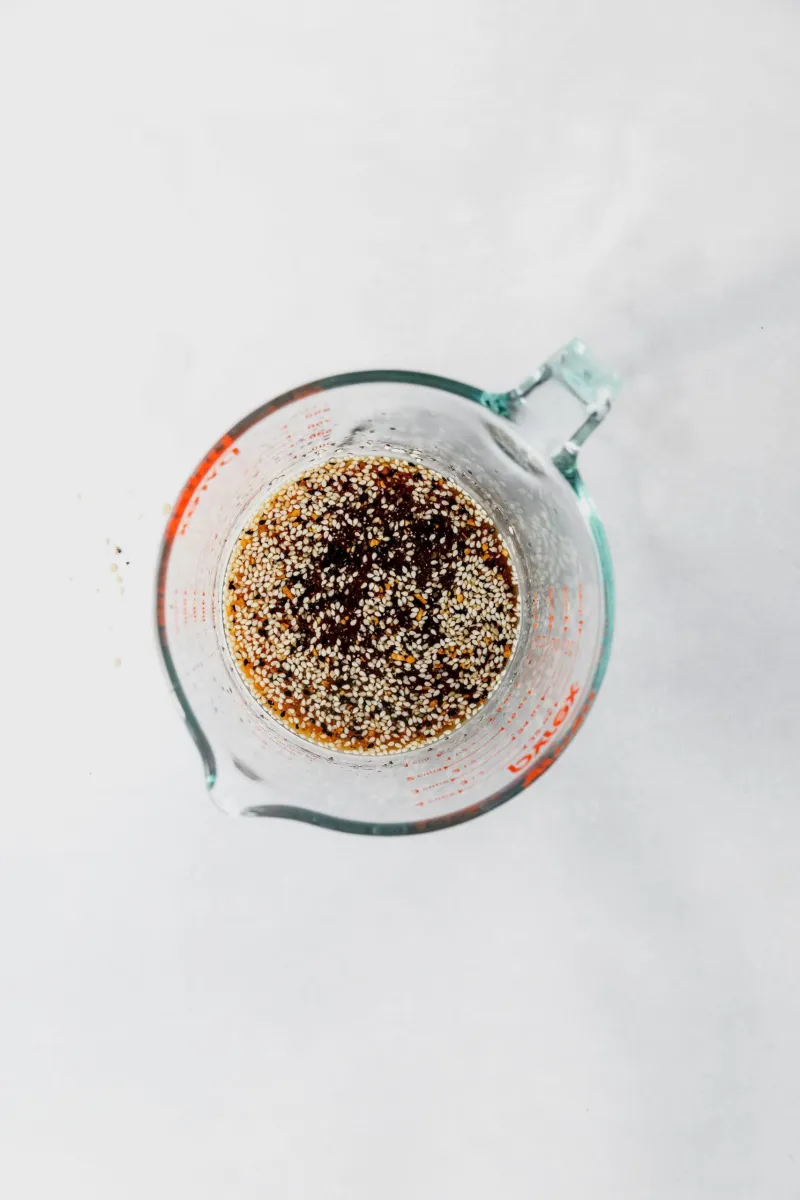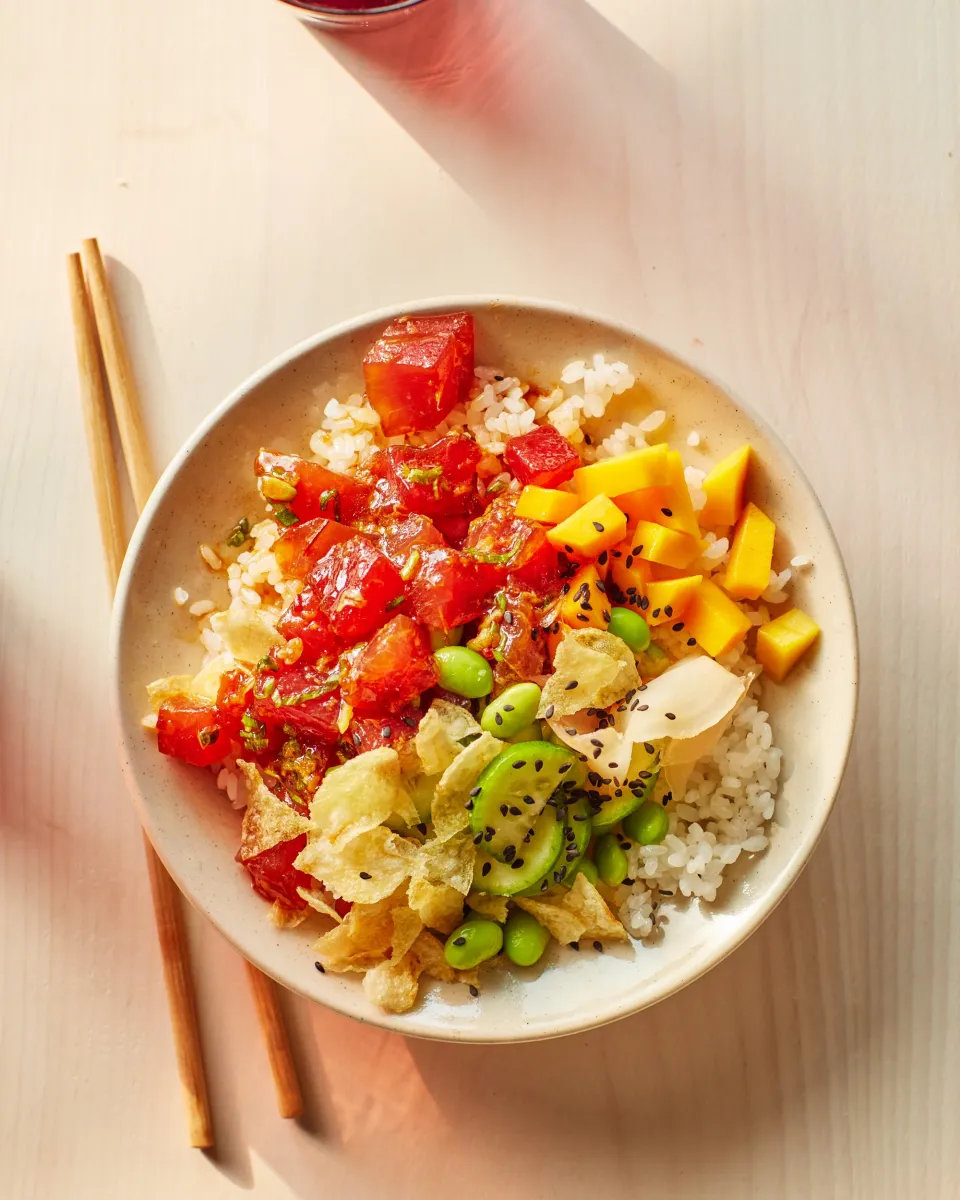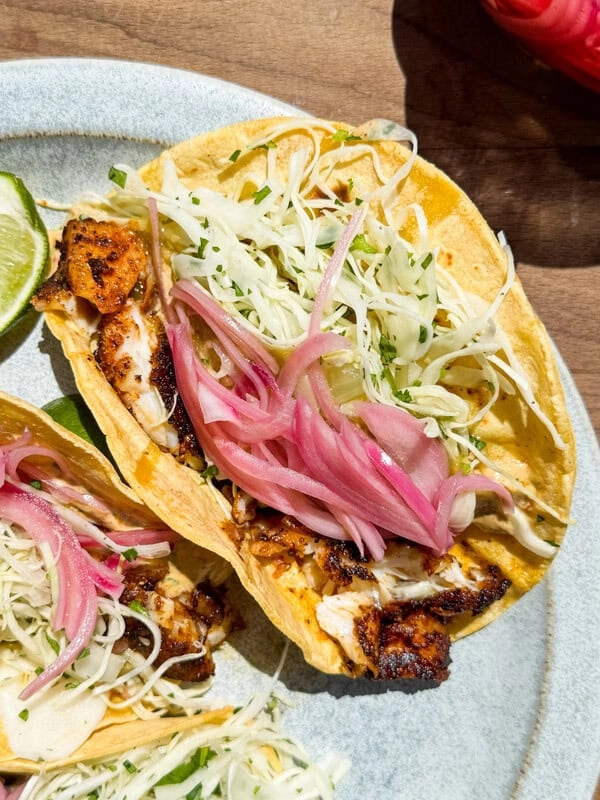Why Choose Non-Seared Ahi Tuna
Flavor and Texture
Non-seared ahi tuna offers a clean, fresh taste that highlights the natural flavors of the fish. Unlike seared tuna, which develops a cooked outer layer, raw ahi tuna has a silky, tender texture that melts in your mouth. This makes it perfect for dishes like poke bowls and tartare where the quality and freshness of the fish really stand out.
Health Benefits
Choosing non-seared ahi tuna comes with some solid health perks. It’s low in fat and calories but rich in protein, omega-3 fatty acids, and essential vitamins like B12 and D. Eating it raw preserves these nutrients since cooking can sometimes reduce them. Plus, raw tuna is a great option for those looking to maintain a lean and healthy diet with high nutritional value.
Versatility
Non-seared ahi tuna is incredibly versatile. It can be served as poke bowls, tartare, sushi, or sashimi and pairs well with a range of flavors—from tangy citrus and fresh herbs to spicy sauces. This makes it ideal for easy tuna dinner ideas or meal prep since it can adapt to different cuisines and occasions, providing a fresh seafood option any time.
Sourcing Tips
To enjoy non-seared ahi tuna safely and deliciously, sourcing is key. Always look for sushi-grade or sashimi-grade tuna labeled fresh and safe for raw consumption. Trusted seafood markets or reputable grocery stores with high turnover will offer the best options. If you can’t find fresh, frozen ahi tuna that’s been properly handled and thawed is a good backup. Checking for bright color, firm texture, and a clean ocean smell will help you pick the freshest fish possible.
Recipe 1 Ahi Tuna Poke Bowl
Overview
Ahi tuna poke bowls are a fresh, flavorful way to enjoy raw tuna without searing. This Hawaiian-inspired dish highlights the natural taste and texture of sushi-grade ahi tuna, combined with simple ingredients like soy sauce, sesame oil, and fresh veggies. It’s an easy tuna dinner idea that’s perfect for meal prep or a quick, healthy lunch.
Ingredients
- 8 oz sushi-grade ahi tuna, diced
- 2 cups cooked white or brown rice
- 1 avocado, sliced
- 1 cucumber, diced
- 2 green onions, chopped
- 2 tablespoons soy sauce (or tamari for gluten-free)
- 1 tablespoon sesame oil
- 1 teaspoon rice vinegar
- 1 teaspoon toasted sesame seeds
- 1/2 teaspoon grated ginger
- Optional: 1/2 cup shredded carrots, pickled ginger, seaweed salad
Step-by-Step Instructions
- Prepare the Sauce: In a small bowl, whisk together soy sauce, sesame oil, rice vinegar, and grated ginger.
- Mix Tuna: Toss the diced ahi tuna in the sauce until evenly coated. Let it marinate in the fridge for 10-15 minutes.
- Assemble the Bowl: Place cooked rice at the base of your bowl. Arrange marinated tuna, avocado slices, cucumber, green onions, and any optional veggies on top.
- Finish: Sprinkle toasted sesame seeds over everything. Add pickled ginger or seaweed salad if you like.
Tips
- Use fresh, sushi-grade ahi tuna to ensure safety and the best texture.
- Don’t over-marinate the tuna; 10–15 minutes is enough.
- Use a rice cooker or instant pot for perfectly cooked rice every time.
- Add crunchy toppings like toasted nuts or crispy onions for extra texture.
Serving Suggestions
Serve your ahi tuna poke bowl chilled or at room temperature. Pair it with a light miso soup or a simple seaweed salad to round out the meal. For a refreshing drink, iced green tea or sparkling water with lemon works great.
Recipe 2 Ahi Tuna Tartare with Citrus and Herbs
Overview
Ahi tuna tartare with citrus and herbs is a fresh, light dish that highlights the clean flavor of raw tuna. It’s perfect when you want something quick, healthy, and full of vibrant flavors. This no-cook recipe uses simple ingredients to bring out the best in sushi-grade ahi tuna.
Ingredients
- 8 oz sushi-grade ahi tuna, finely diced
- 1 tablespoon fresh lime juice
- 1 tablespoon fresh orange juice
- 1 tablespoon soy sauce or tamari (for gluten-free)
- 1 teaspoon sesame oil
- 1 small shallot, minced
- 1 tablespoon fresh cilantro, chopped
- 1 tablespoon fresh mint, chopped
- 1 teaspoon grated ginger
- Pinch of salt and pepper
- Optional: sesame seeds or avocado slices for garnish
Step-by-Step Instructions
- Dice the ahi tuna into small, even pieces. Keep it chilled while preparing the other ingredients.
- In a mixing bowl, combine lime juice, orange juice, soy sauce, sesame oil, shallot, cilantro, mint, and grated ginger. Stir well.
- Add the diced tuna to the bowl and gently toss until coated with the citrus and herb dressing.
- Season with salt and pepper to taste.
- Refrigerate the mixture for 10-15 minutes before serving to let the flavors meld.
Tips
- Use sushi-grade ahi tuna to ensure freshness and safety when eating raw.
- Keep the tuna cold until serving to maintain texture and taste.
- Chop herbs finely for balanced flavor in every bite.
- Skip soy sauce if you want it lighter or try coconut aminos for a soy-free option.
Serving Suggestions
Serve the ahi tuna tartare on a bed of mixed greens or with crispy wonton chips. It also pairs well with sliced avocado and a drizzle of extra citrus juice. This dish works great as an appetizer or a light lunch, especially on warm days.
Recipe 3 Grilled Ahi Tuna with Mango Salsa
Overview
This grilled ahi tuna with mango salsa recipe brings a fresh, tropical twist to your table. It’s perfect for those who want a flavorful, healthy meal that’s easy to prepare. The smoky, charred tuna pairs perfectly with the sweet and zesty mango salsa, making it a crowd-pleaser for summer cookouts or quick weeknight dinners.
Ingredients
- 1 lb sushi-grade ahi tuna steaks
- 1 ripe mango, diced
- 1/2 red bell pepper, diced
- 1/4 cup red onion, finely chopped
- 1 jalapeño, seeded and minced
- Juice of 1 lime
- 2 tbsp fresh cilantro, chopped
- 2 tbsp olive oil
- Salt and pepper to taste
Step-by-Step Instructions
- Prepare the salsa: In a bowl, combine mango, red bell pepper, red onion, jalapeño, lime juice, and cilantro. Mix well and season with salt. Set aside to let flavors meld.
- Preheat the grill: Heat your grill to medium-high heat.
- Season the tuna: Brush ahi tuna steaks with olive oil and season both sides with salt and pepper.
- Grill the tuna: Place tuna steaks on the grill and cook for about 2-3 minutes per side. The goal is to get a good sear outside but keep the center rare to medium-rare.
- Rest and serve: Remove the tuna from the grill and let it rest for a couple of minutes. Slice and top with mango salsa.
Tips
- Use sushi-grade tuna to ensure freshness and safe consumption when cooking rare.
- Keep grilling time short to avoid overcooking the tuna—it should stay tender inside.
- For extra flavor, marinate the tuna briefly in olive oil, lime juice, and garlic before grilling.
- If you don’t have a grill, use a grill pan on your stove.
Serving Suggestions
- Serve with a side of steamed jasmine rice or quinoa for a complete meal.
- Pair with grilled veggies like asparagus or zucchini to keep things light.
- Add a simple green salad with a citrus vinaigrette to complement the fresh mango salsa.
Tips for Success with Ahi Tuna
Preparation
- Always start with sushi-grade ahi tuna to ensure quality and safety, especially for raw recipes like poke bowls and tartare.
- Keep the tuna cold until you’re ready to use it. Chill it in the fridge or on ice to maintain freshness.
- Use a sharp knife when slicing ahi tuna to get clean, even cuts that enhance texture and presentation.
- Pat the tuna dry with paper towels before seasoning or assembling your dish to prevent sogginess.
Cooking Techniques
- For non-seared ahi tuna recipes, avoid overcooking to preserve its natural flavor and delicate texture.
- If grilling, cook quickly on high heat to avoid drying out the fish—usually just a couple of minutes per side.
- When making raw dishes like poke or tartare, keep your ingredients chilled and mix gently to maintain texture.
- Use simple seasonings like soy sauce, sesame oil, citrus, or fresh herbs to let the tuna’s flavor shine.
Storage
- Store fresh ahi tuna wrapped tightly in plastic wrap or vacuum-sealed, then place it in the coldest part of your fridge.
- Use fresh ahi tuna within 24 hours of purchase for the best taste and safety.
- If you plan to freeze, wrap the tuna tightly in freezer-safe packaging and consume within 2 months for optimal quality.
Safety
- Always buy sushi-grade tuna from trusted sources to reduce the risk of foodborne illness.
- Keep raw tuna separate from other foods to prevent cross-contamination.
- Follow safe handling practices: wash hands, utensils, and surfaces thoroughly after contact with raw fish.
- When in doubt about freshness or appearance, it’s better to err on the side of caution and not consume the tuna raw.
These simple tips will help you make the most out of your ahi tuna dishes and ensure that every meal is fresh, safe, and delicious.
Pairing and Presentation Ideas
Side Dishes
When serving non-seared ahi tuna dishes like poke bowls or tartare, light, fresh sides work best. Think crisp cucumber salad, avocado slices, or seaweed salad to complement the tuna’s clean flavor. For grilled ahi tuna with mango salsa, try a simple quinoa salad or grilled vegetables to keep the meal balanced and vibrant.
Beverages
Pair your ahi tuna dishes with refreshing beverages that don’t overpower the delicate taste. Dry white wines such as Sauvignon Blanc or Pinot Grigio are excellent choices. If you prefer non-alcoholic options, green tea or sparkling water with a slice of lemon can enhance the flavors without overshadowing them.
Plating
Presentation matters, especially with raw or lightly cooked ahi tuna. Use shallow bowls or small plates for poke bowls and tartare to show off the vibrant colors. For grilled ahi tuna, slice the fish and fan out the pieces on a wide plate, spooning mango salsa or herbs over the top. Garnish with fresh herbs like cilantro or microgreens and a drizzle of citrus or soy-based sauce for a polished look.
For more easy dinner ideas that pack big flavor, check out my grilled fish recipes and simple oven meals here.
FAQs
Where can I find sushi-grade ahi tuna
You can find sushi-grade ahi tuna at high-end grocery stores, specialty seafood markets, or trusted online retailers. Look for labeling that specifies “sushi-grade” or “sashimi-grade” to ensure it’s safe to eat raw. If you’re near coastal areas or major cities, local fish markets often have fresh options too.
Can I use frozen ahi tuna for these recipes
Yes, frozen ahi tuna works well for these recipes. Make sure it’s properly frozen at very low temperatures to maintain quality and safety, often marked as “flash-frozen.” Thaw it slowly in the fridge to keep texture and flavor intact before preparing dishes like ahi tuna poke bowl or tartare.
How do I know if my tuna is fresh
Fresh tuna should have a firm texture, vibrant color (bright red or deep pink), and a clean, ocean-like smell—never fishy or sour. Avoid any signs of discoloration, dryness, or slime. Buying from reputable sources helps ensure freshness.
What are some vegan alternatives to ahi tuna
For vegan options, try marinated watermelon, young coconut, or king oyster mushrooms sliced and seasoned to mimic ahi tuna’s texture and flavor. These work well in raw-style dishes like poke bowls or tartare.
How can I adjust these recipes for gluten-free diets
Most ahi tuna recipes are naturally gluten-free but watch out for sauces or marinades containing soy sauce or other gluten ingredients. Swap regular soy sauce with gluten-free tamari and check all packaged ingredients to keep your meal safe for gluten-free diets.
For more easy recipe ideas that fit different needs, check out our easy bake oven recipes and fresh fish recipes for simple meals any day.










